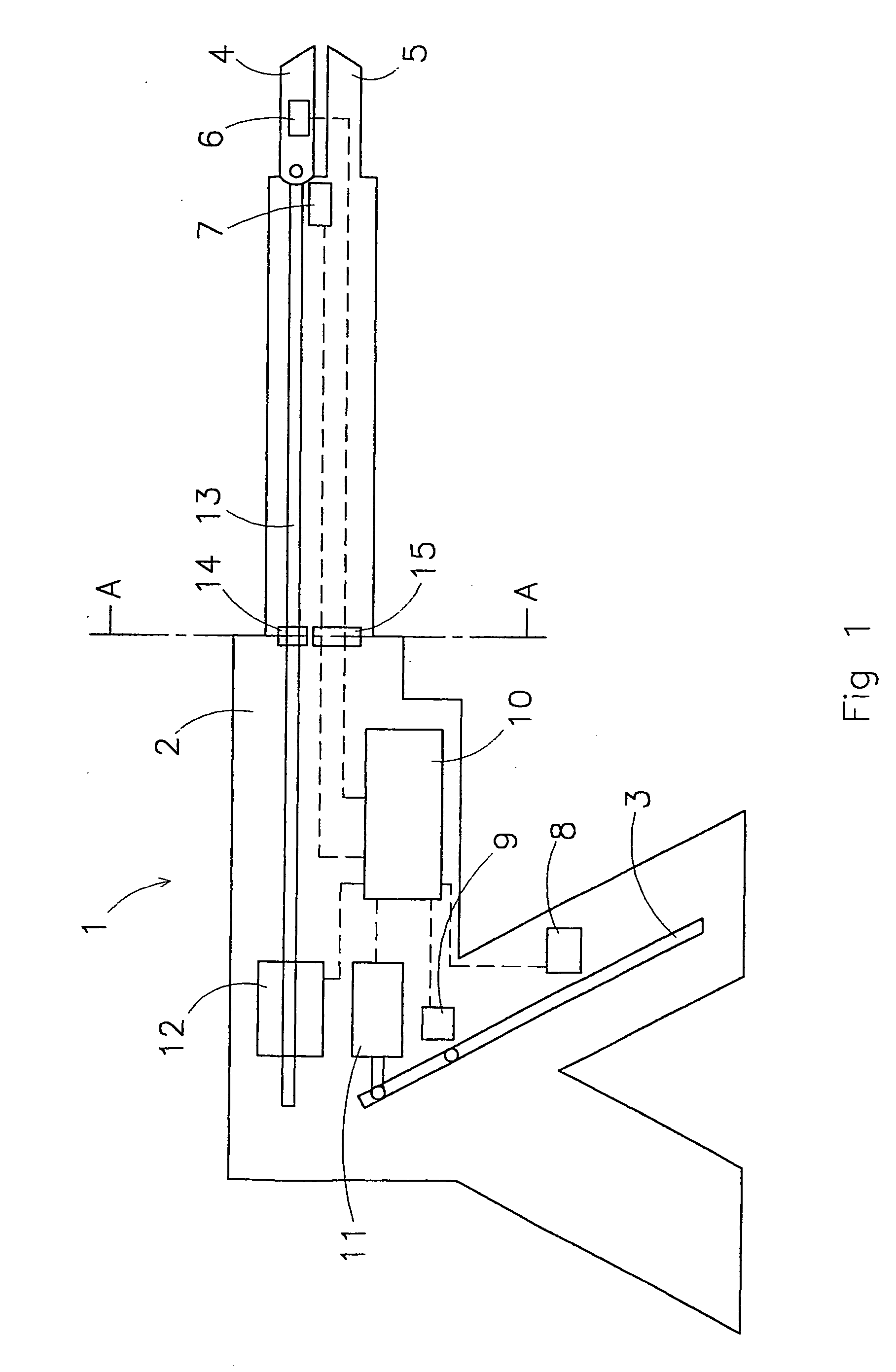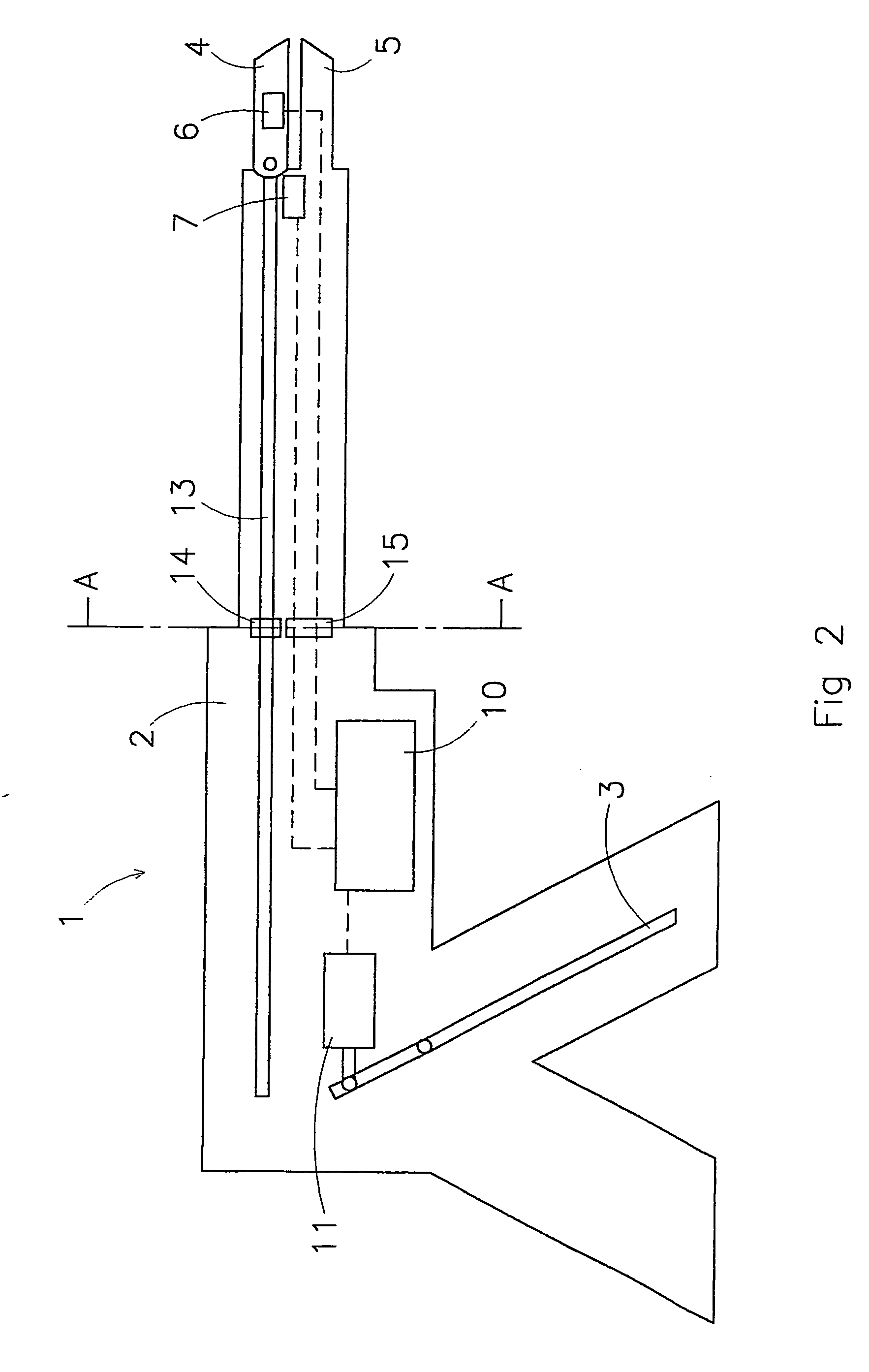Surgical instrument
a surgical instrument and working element technology, applied in the field of surgical instruments, can solve the problems of poor mechanical feedback of damage to tissue, and inability to correctly feed the force exerted on the working element to the operating mechanism of the instrument, so as to achieve the effect of keeping in use reliably and inexpensively, and difficult sterilization
- Summary
- Abstract
- Description
- Claims
- Application Information
AI Technical Summary
Benefits of technology
Problems solved by technology
Method used
Image
Examples
Embodiment Construction
[0036]FIG. 1 shows a first preferred embodiment of the instrument according to the invention, denoted overall by reference numeral 1. The various components of the instrument 1 are diagrammatically depicted in the figure. The instrument 1 comprises an elongate frame 2 having, at a first end, at least one operating element 3 and, at the second end, a working element 4 which is moveably secured to the frame and a second working element 5 which in this case is fixed to the frame and forms a component thereof. It is also possible to make a second working element moveable with respect to the frame and to provide more than two fixed or moveable working elements.
[0037] A force sensor 6 for measuring the force which is exerted on the working element 4 and a position sensor 7 for measuring the position of the working element 4 with respect to the frame 2 are also arranged in or close to the working element 4. A force sensor 8 for measuring the force which is exerted on the operating element...
PUM
 Login to View More
Login to View More Abstract
Description
Claims
Application Information
 Login to View More
Login to View More - R&D
- Intellectual Property
- Life Sciences
- Materials
- Tech Scout
- Unparalleled Data Quality
- Higher Quality Content
- 60% Fewer Hallucinations
Browse by: Latest US Patents, China's latest patents, Technical Efficacy Thesaurus, Application Domain, Technology Topic, Popular Technical Reports.
© 2025 PatSnap. All rights reserved.Legal|Privacy policy|Modern Slavery Act Transparency Statement|Sitemap|About US| Contact US: help@patsnap.com



